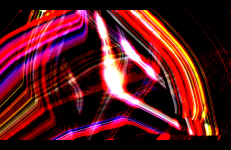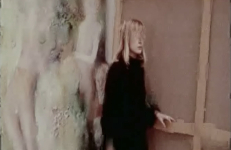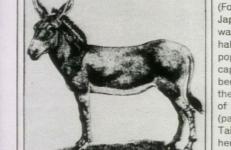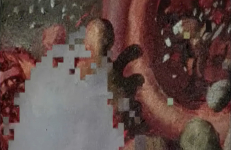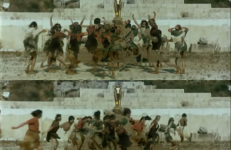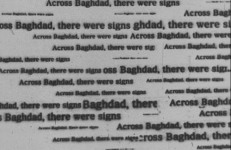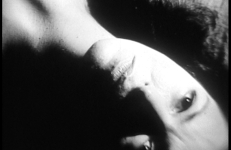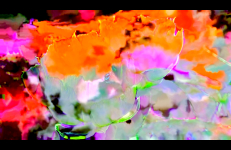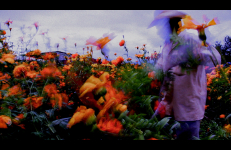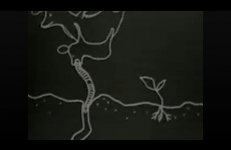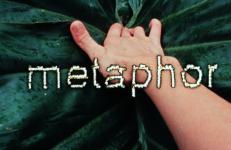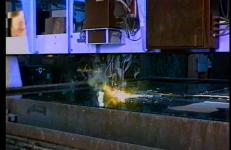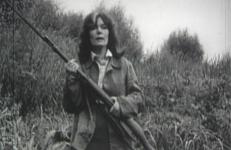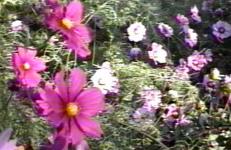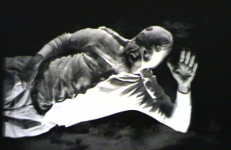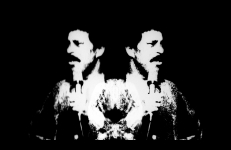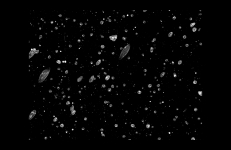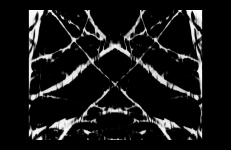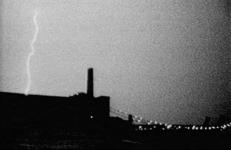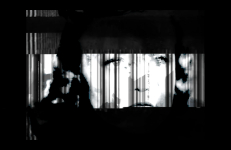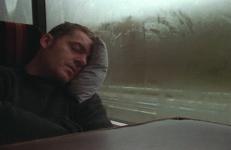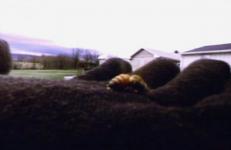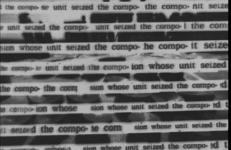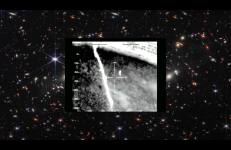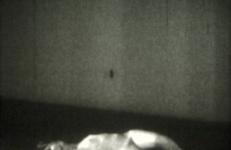This is the common audiovisual system that interconnects the body of the workers and the industrial machinery of the actual system.
Experimental Film
Images from magazines and color supplements accompany a spoken text taken from Herbert H. Clark’s “Word Associations and Linguistic Theory” (in New Horizons in Linguistics, ed. John Lyons,1970). By using the ambiguities inherent in the English language, Associations sets language against itself. Image and word work together and against each other to destroy and create meaning.
Part of paraconsistent sequence series and the hauntology series.
This film was made from The New York Times newspaper articles. The semi-automated animation process resulted in sentence recombinations that sometimes made sense while randomly emphasizing certain words and images.
The computer animation was transferred to one 100ft roll of 16mm Tri-X reversal film and then hand-processed. The reversal negative is the original.
Producer/ Director: Sabine Gruffat
Hand Processing: Matthew Kelson
The Erosions series develops the concepts of oxidation, wear and entropy from an audiovisual and cinematographic perspective. This is Barranca (Canyon).
After the ominous attack that the paramilitary and police corporations carried out on September 26, 2014, in Iguala, Guerrero, the student Aldo Gutiérrez Solano remains in a coma until today. A brief homage to the resistance of the body fighting against power.
The Bats details the mating habits of flying mammals in an abandoned Mayan temple in the 14th Century.
This title is only available on Soft Science.
"Exhibitons, whether of objects or people, are displays of the artifacts of our disciplines. They are for this reason also exhibits for those who make them, no matter what their ostensible subject. The first order of business is therefore to examine critically the conventions guiding ethnographic display..."
- Destination Culture by Barbara Kirshenblatt-Gimblett, 1998
Between the Frames is a series that offers a glimpse into contemporary history that is already past, a portrait of personalities and opinions shaping what and how art reaches a public forum.
Epilogue: Between the Frames, Chapter 8
"A film about the time of the blast furnaces — 1917-1933 — about the development of an industry, about a perfect machinery which had to run itself to the point of its own destruction. This essay... on heavy industry and the gas of the blast furnace, convinces through the author's cool abstraction and manic obsession, and through the utilization of a single example of the self-destructive character of capitalistic production: 'The image of the blast furnace gas is real and metaphoric; an energy blows away uselessly into the air. Guided through a system of pipes, the pressure increases.
The unstable earth becomes the epicenter of this videotape document which explores—in a fractured way—the relationships between the people, places, and furniture that sit atop the San Andreas Fault.
"I don't put myself into my movies because that would be too much--my pictures reflect my own feelings. So hopefully it's entertaining. Otherwise I can't bear looking at them, ha ha!"
–– Mike Kuchar
In this dream-portrait of Mike Kuchar, he floats through his memories as the sea, space and sky drift past. Wrapped in odd costumes, he frolics with the imaginary creatures surrounding him, and recalls the creatures of his own imagination.
“Jesus Christ, look at the white people, rushing back. White people don’t care, Jack...” - Richard Pryor
Using a 35mm strip of motion picture slug featuring the recently deceased American comedian Richard Pryor, this extended Rorschach assault on the eyes moves out of a flickering chaos created by incompatible film gauges into a punchline involving historically incompatible racial stereotypes.
“A night sky fills with light shimmers and flecks, surface markings, heavenly bodies. It’s an ocean, a well, a screen, a mirror, a portal. Blackness/void cluttered by growing ephemera. Dark reaches of outer and inner space gradually sifts through shards of granite and diamonds. The mind races as the material becomes greater and more frenetic, reaching a nearly audibly grinding pitch of excitement, flurry, and instantaneous infinity that ebbs at first and then maintains. Flashes of color emerge or are imagined.
"Ben Russell continues his initial impulse for the series, the exploration of "naturally-derived psychedelia", with this cadenced phantasmagoria of negative imagery and negative space. The tendrils of sharp white trees become osseous arteries against the black void of the sky. The spiraling spine of a massive tree collides against a spanning pan of a branch twined into two through a mirroring effect. Representation morphs into abstraction as the film becomes a study in density and fearful symmetry in the forest of sight.
"In the late 1980s I saw ads in New York for a telephone 'Confession Line'. To call in and 'confess' was free; listening in incurred a by-the-minute charge. The soundtrack was built from a collection of these actual, anonymous calls. Adultery, theft, and regret; ghosts spun through phone wires and televisions. An installation version was created for the 1992 Worldwide Video Festival (Amsterdam).
Soundtrack: Jem Cohen with Ian MacKaye.
This title is also available on Jem Cohen: Early Works.
This is the burial hymn for thousands of souls in the anthropocentric times. The ghosts of the American way of life. Part of the Hauntology series.
Moving towards an unknown destination, a group of anonymous passengers float through an unidentified landscape. Built from Cohen’s archive documenting his travels, the film can be seen as a curious parable. The film's subheading refers to the Old Testament, Daniel chapter 11, verse 40: “And at the time of the end shall the king of the south push at him: and the king of the north shall come against him like a whirlwind with chariots, and with horsemen, and with many ships; and he shall enter into the countries, and shall overflow and pass over.”
Blind Huber is a film interpretation of a poem by the American writer Nick Flynn loosely based on the life of Francois Huber, the blind 18th Century beekeeper, who sat before a series of hives for fifty years unlocking an unknown world.
Written by Nick Flynn. Cinematographer: Alex Stockwell.
This title is only available on Broad Daylight and Other Times: Selected Works of Kevin Jerome Everson.
This film was made from The New York Times newspaper articles. The semi-automated animation process resulted in sentence recombinations that sometimes made sense while randomly emphasizing certain words and images.
The computer animation was transferred to one 100ft roll of 16mm Tri-X reversal film and then hand-processed. The reversal negative is the original.
Producer/ Director: Sabine Gruffat
Hand Processing: Matthew Kelson
This slow-motion film is a glass snow globe with dancers who topple and bounce off the sides of the frame. Re-purposed by Breder at his Dortmund retrospective as Weisse Tasse in which a video was projected on the side of a white cup.




